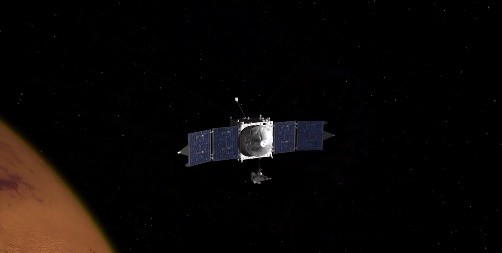Description

Source: Hindu
Disclaimer: Copyright infringement not intended.
Context
Researchers at institutions like SLAC National Accelerator Laboratory have discovered photoemission delays in X-ray regimes.
Details
About the research
- Researchers found that in nitric oxide molecules, core electrons were found to be ejected with a delay of up to 700 attoseconds compared to nitrogen electrons.
- These delays help to understand electron correlation (one electron's movement affects others).
- This helps in designing molecules with specific properties, such as better conductors or insulators.
- This could lead to the development of materials with custom-designed electronic properties.
Trivia:
X-rays are a kind of electromagnetic radiation. This is typically produced within a vacuum tube where a high voltage excites the electrons released by a hot cathode. This radiation has enough energy to shift electrons from atoms to produce observable ions. When X-rays strike an object, some X-rays will be absorbed and some reflected, depending on the density of the object. Those that are reflected can be captured as an image on a photographic plate or detector.

About Photoelectric Effect

Source: Sciencefacts
Disclaimer: Copyright infringement not intended.
- It is a phenomenon where electrons are ejected from a material when it absorbs electromagnetic radiation, such as light.
- This effect played a pivotal role in establishing quantum theory.
- The photoelectric effect helped prove that light has both particle and wave properties, leading to the concept of wave-particle duality.
Background
- The photoelectric effect was first observed by Heinrich Hertzin 1887.
- In 1905, Einstein provided a theoretical explanation for the photoelectric effect (light could be quantized into photons). For this, he won the Nobel Prize in Physics in 1921.
Laws of Photoelectric Emission
- Emission of electronsonly occurs when the frequency of the incident light is above the threshold frequency.
- Number of electrons emittedis directly proportional to the intensity of the incident light, provided the light's frequency is above the threshold frequency.
- Energy of the emitted electronsdepends on the frequency of the light, not its intensity.
- The emission of electronsis immediate and has no time lag once the appropriate frequency light is applied.
Trivia:
Robert Millikan conducted a detailed experiment in 1916 to verify Einstein’s equation for the photoelectric effect, which confirmed the relationship between photon energy and frequency.
Applications
- Photoelectric Cells (Photodetectors):Devices that convert light into electrical energy, used in light meters, solar panels, and automatic doors.
- Photomultipliers:Instruments used in scientific research to detect and amplify light signals.
- Solar Panels:Utilize the photoelectric effect to convert sunlight into electricity.
- Night Vision Devices:These use the photoelectric effect to amplify low-light images.
Sources:TheHindu

|
PRACTICE QUESTION
Q: The photoelectric effect is not just a fundamental phenomenon in quantum physics but also has significant real-world applications. Discuss. (250 Words)
|
















